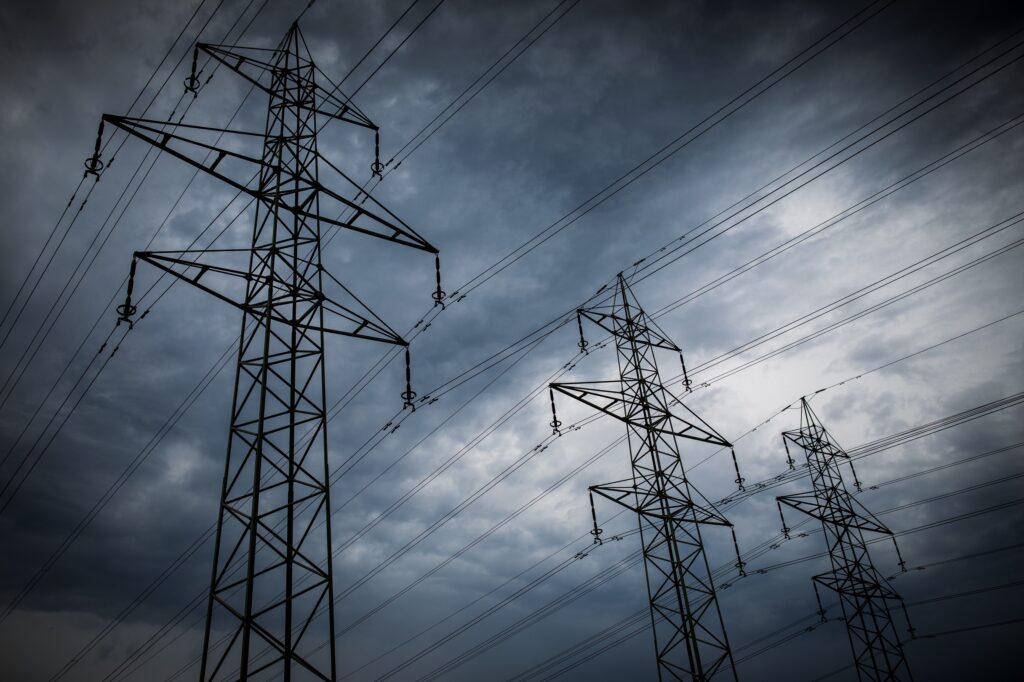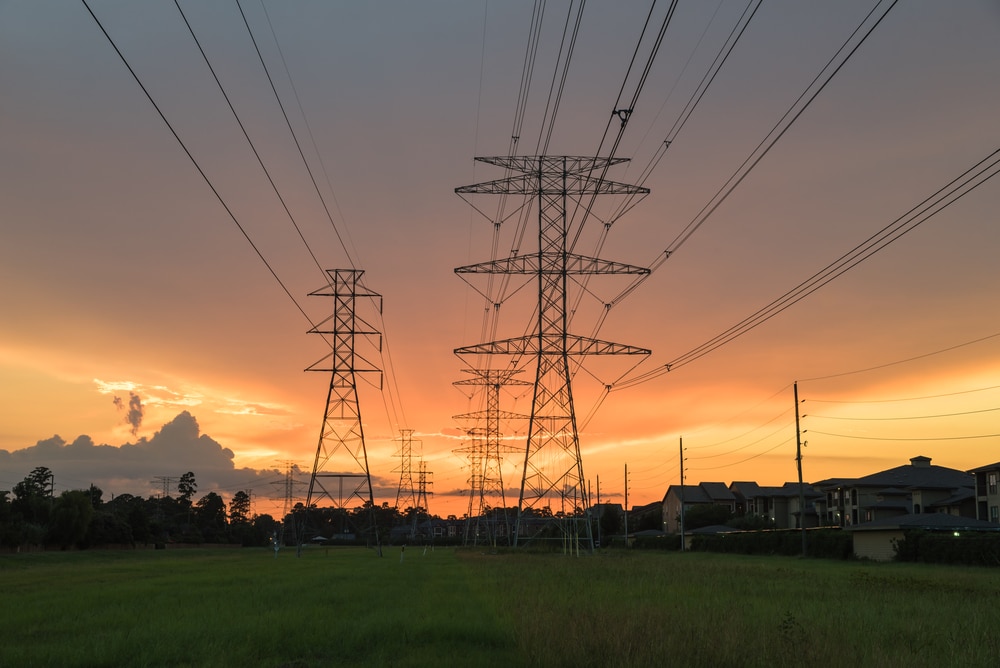After the Storm: Changes to Texas Electricity Regulation in the Wake of Winter Storm Uri
Nineteenth-century German philosopher Friedrich Nietzsche once said, “What does not kill me makes me stronger.”[1] Those who lived through Winter Storm Uri in February 2021, however, may disagree when it comes to the Texas electric grid.
The storm and its resulting blackouts caused 69% of Texans to be without power—for several days in some areas. Failures in other critical infrastructure also led to disruptions in water service for 49% of Texans.[2] As a result, at least 246 people died, and the total economic damage was estimated to be between $200 and $300 billion. [3] The storm and its aftermath also left lingering doubts about the ability of the grid to effectively function in the coming years.
The actions taken in the aftermath of the storm defy easy characterization. Some have served to reduce the risk of future outages; others have done little to reduce the risk at a high cost to consumers. And some risks remain unaddressed or may have been exacerbated by regulatory action.
In this article, I summarize some of the major changes that have been implemented in the wake of the storm as well as major regulatory changes now being considered by the state’s electricity regulator, the Public Utility Commission of Texas (PUCT), and the grid operator, the Electric Reliability Council of Texas (ERCOT). I also briefly note where some actions by state policymakers may prove counterproductive over the long term.
I. The Cause of the 2021 Blackouts
To understand the changes made to and being considered for the ERCOT system in the wake of the blackouts, it is helpful to provide a background and explain briefly what happened during the blackouts in February 2021.
Electric demand in Texas tends to be highest during the summer, and the system is optimized around that fact. As a result, historically, far less attention has been paid to distinct risks to the system that could exist during periods of extreme cold. In early 2021, not only did Texas face extreme winter warnings throughout the entire state, with temperatures in some areas dropping to century-long record lows, but temperatures stayed unusually low for extended periods.[4] This, combined with ice events and other weather effects, compounded the stress on the system.
The unusually cold weather increased the demand for electricity to heat Texas homes and businesses. In February 2021, ERCOT set an all-time winter record for electrical demand of 69,692 MW, which was more than 13,000 MW higher than the peak in February 2020.[5] Absent the forced outages, demand would have been even higher. Yet increased demand was not the main problem. Rather, at the same time that Texans were trying to use more electricity than ever before, extremes of cold and ice were rendering a substantial portion of the state’s generators unable to function.[6] The level of generator outages was staggering. At its worst point, more than one-third of all power generation was offline, and the outages occurred for every fuel type: coal, natural gas, wind, and even nuclear.[7]
According to a review by the Federal Energy Regulatory Commission (FERC) and the North American Electric Reliability Corporation (NERC), a majority of generation outages during Winter Storm Uri were due to freezing equipment or other on-site problems. An additional 31% were due to fuel-supply issues, mostly at natural gas plants; this is in line with data showing that combined daily natural gas production for Texas, Oklahoma, and Louisiana fell by more than half during February 2021.[8] As a result, even many plants that could have still operated in the cold were not able to run because they could not obtain fuel.
II. Changes to the ERCOT System Post-Uri
After Winter Storm Uri, the Texas legislature passed SB 2 and SB 3, major pieces of legislation aimed at reforming Texas’s electric market.[9] SB 3 required Texas generators to weatherize their power plants so that they would be operable in extreme weather conditions.[10] The legislation also reorganized the ERCOT board, took steps to increase preparation, planning, and communication for future events, and contained a variety of other provisions making adjustments to the electricity market.[11] The weatherization requirements for power plants were promptly implemented by PUCT.[12] Efforts to protect natural gas infrastructure, which lies within the purview of a different regulatory body (the Texas Railroad Commission) have been slower and less extensive.[13]
III. Changes Currently Under Consideration
Aside from these issues, some policymakers and advocates have sought to make additional changes to the state’s electricity market to address what they see as other risks to the grid. Chief among these perceived risks is a lack of investment in new, “dispatchable” generation—generation that can ramp up or down in response to grid needs.[14] The concern is that without such generation, there will be a chronic shortage of electricity in ERCOT.[15] Were this situation to come to pass, it would likely manifest differently than it did in February 2021: Instead of millions being without power for days due to an extreme weather event, a chronic shortage of power would exist, even during normal times. The worry is not so much that the grid will have trouble maintaining reliability during extreme events but that it will struggle even during so- called “blue sky” conditions.[16]
While these issues largely were not in play during February 2021, advocates view the event as a wider wake-up call to address other potential problems with the grid that could affect electric reliability.[17]
These concerns have led PUCT to consider a series of potential redesigns of the Texas electric market. PUCT is currently considering three proposals, collectively known as “Phase 2” of the market redesign,[18] which alone or in combination aim to address “blue sky” risk.
The first proposal, championed by PUCT Chairman Peter Lake, would establish what is known as a load-serving entity (LSE) reliability obligation.[19] This scheme involves a series of steps. PUCT and ERCOT would first calculate the amount of available generation needed to ensure that the desired level of electric reliability would be achieved.[20] ERCOT would then assign to each existing power plant or other generation resource a rating based on how much of their capacity can be relied upon during each season of the year.[21] This rating would consider factors that may limit the ability of the resource to send power to the grid, including intermittency—limitations on the duration that the resource can generate at any one time.[22] Finally, each LSE (utilities or other electric providers) would be assigned the responsibility to arrange an amount of electricity supply expected to meet their demand.[23] Power plants or other generation resources with a lower rating would count less toward meeting this requirement than resources with higher ratings. For example, an LSE with an 80 MW obligation could meet it by procuring power from a generator with 100 MWs of capacity and an 80 percent rating or one with 160 MW of capacity with a 50 percent rating, or by some other combination. Obligations must be met in advance. LSEs that fail to meet their obligations would be assessed a penalty, the proceeds of which would be used by ERCOT to procure the necessary generation resources itself.[24]
The second proposal, advanced by Commissioner William McAdams, is to encourage “dispatchable generation” through the creation of a dispatchable energy credit (DEC) or dispatchable portfolio standard system.[25]
Under this system, generators would be required to buy credits from new dispatchable generation, which should help incentivize investment in new dispatchable capacity.[26] To qualify as dispatchable generation, a resource would have to be able to ramp up generation when called upon to do so by state authorities.[27] It is anticipated that most of the generation that would qualify for the dispatchable credits would be either natural gas or combined solar and storage projects.
The final Phase 2 proposal, originally put forward by Commissioner Lori Cobos, is known as a backstop reliability service (BRS) or strategic reliability service.[28] Under this system, ERCOT would be able to pay generators to stand ready to provide additional power when needed.[29]
IV. Phase 2 Reforms Are Not Necessary
While each of the Phase 2 proposals has its advocates among the PUCT Commissioners, it is not yet clear if any can command majority support. It is also unclear whether the risks cited by advocates justify such major market changes –all three proposals would impose significant additional costs on consumers. ERCOT’s independent market monitor suggests that actions already taken by the PUCT and ERCOT to hedge against the risk of blackouts will cost Texas ratepayers $1.5 billion a year through higher electric bills.[30] How much additional cost would come from the Phase 2 proposals is difficult to estimate. The cost of each of the three options will depend on the scale at which they are deployed, but the cost for any of the three would likely need to be sizable if the proposals are to achieve their stated purpose.
Of note, depending on design, the DEC and BRS systems could have the unintended effect of increasing instability and supply shortages on the grid. Both systems strive to encourage additional generation through subsidies.[31] Yet subsidizing additionality (e.g. only new generation) has the potential to undercut existing generation.[32] This could force premature generation retirements, offsetting supply gains from the subsidized generation.
As mentioned above, none of the Phase 2 proposals would have prevented the blackouts associated with Winter Storm Uri even if they had been in place long ahead of time.[33] The Phase 2 proposals are intended to incentivize new generation capacity. Yet, in Winter Storm Uri, what Texas lacked was not generation capacity but generation capacity able to function in the extreme weather environment. In fact, it remains unclear what level of reliability benefit the different Phase 2 proposals would provide over and above the status quo. Even if Texans are willing to pay for additional reliability, the Phase 2 proposals lack a clear quantification of reliability benefits makes it impossible to say ratepayers would be getting good value for their money from any of the Phase 2 reforms.
The market signals that the Phase 2 reforms are not necessarily needed to draw new generation to Texas – Texas has a robust electric generation market, and investment continues to be made in new generation, with over 217 GW of new generation under study in its the interconnection queue as of July 2022.[34] However, this new generation largely consists of renewable energy projects, which are criticized by market redesign advocates as inherently unreliable.[35] The limitations of intermittent resources are, of course, well known. Yet it is a mistake to think of some energy types as completely reliable and others as unreliable. There is no such thing as “perfect” capacity and the grid must contain the proper combination of resources necessary to meet customers’ desires for reliable supply. Without clear reliability objectives, Phase 2 could easily result in spending more money without reducing the risk of customer outages.
V. Conclusion
Winter Storm Uri has led to significant action by state lawmakers, regulators, and industry to prevent future outages. These actions have not eliminated all risks to the system and have certainly not eliminated the fear of future outages. Yet it remains unclear whether further action of the type currently being contemplated by PUCT would enhance reliability. While many Texans worry about whether the lights will stay on, they may soon face another shock as the costs of regulatory actions begin to be reflected in their monthly electricity bills.
1 Friedrich Nietzsche, Twilight of the Idols (1889).
2 Jess Donald, Winter Storm Uri 2021: The Economic Impact of the Storm, FISCAL NOTES, (Oct. 2021). https://comptroller.texas.gov/economy/fiscal- notes/2021/oct/winter-storm-impact.php.
3 Patrick Svitek, Texas puts final estimate of winter storm death toll at 246, THE TEX. TRIBUNE (Jan. 2, 2022). https://www.texastribune.org/2022/01/02/texas-winter-storm- final-death-toll-246/amp; Reliability and Resilience in the Balance, AM. SOC’Y OF CIV. ENG’RS (ASCE) TEX. SECTION (Feb. 16, 2022). https://www.texasce.org/wp- content/uploads/2022/02/Reliability-Resilience-in-the-Balance- REPORT.pdf.
4 Valentine’s Week Winter Outbreak 2021: Snow, Ice, & Record Cold, NAT’L WEATHER SERV. (Aug. 15, 2022). https://www.weather.gov/hgx/2021ValentineStorm.
5 ERCOT Monthly Operational Overview (February 2021), ERCOT, (Mar. 23, 2021). https://www.ercot.com/files/docs/2021/03/23/ERCOT_Monthly_ Operational_Overview_202102.pdf.
6 The Timeline and Events of the February 2021 Texas Electric Grid Blackouts, THE UNIV. OF TEX. AT AUSTIN ENERGY INST., (July 2021). https://energy.utexas.edu/sites/default/files/UTAustin%20%2820 21%29%20EventsFebruary2021TexasBlackout%2020210714.pdf.
7 Id.
8 February 2021 Cold Weather Grid Operations: Preliminary Findings and Recommendations, NERC (Sept. 23, 2021), https://ferc.gov/media/february-2021-cold-weather-grid- operations-preliminary-findings-and-recommendations-full.
9 SB 2, Texas 87th Reg. (2021); SB 3, Texas 87th Reg. (2021).
10 Id.
11 Id.
12 Rulemaking to Establish Electric Weatherization Standards, Proposal For Publication For New 16 TAC § 25.55 As Approved at the August 26, 2021 Work Session, Pub. Util. Comm’n of Tex. Proj. No. 51860 (Aug. 26, 2021), http://interchange.puc.texas.gov/Documents/51840_68_115002 5.PDF.
13 Mitchell Ferman, Texas senators blast regulator for power grid winterization loophole lawmakers wrote into law, THE TEXAS TRIBUNE (Sept. 28, 2021). https://www.texastribune.org/2021/09/28/texas-power-grid- loophole.
14 Brent Bennett, Improving the ERCOT Grid Through a Reliability Requirement for Variable Generation, TEX. PUB. POL’Y FOUND. 3 (Oct. 18, 2021), https://www.texaspolicy.com/wp- content/uploads/2021/10/LP-ImprovingReliabilityofERCOTGrid- 10-18-21-BrentBennett-FINAL.pdf.
15 Id.
16 Id.
17 See, e.g., T. Lynn Allen, Power Failure by Design: The Texas Energy Market, AMER. BAR ASS’N (ABA), (June 11, 2021) https://www.americanbar.org/groups/litigation/committees/envi ronmental-energy/articles/2021/summer2021-power-failure-by- design-the-texas-energy-market/.
18 See Review of Wholesale Electric Market Design, Approval of Blueprint for Wholesale Electric Market Design and Directives to ERCOT, Pub. Util. Comm’n. of Tex. Proj. No. 52373 (Jan. 13, 2022), https://interchange.puc.texas.gov/Documents/52373_336_1180125.PDF.
19 Arne Olson, et al., The Load-Serving Entity (LSE) Reliability Obligation, ENERGY + ENV’T. ECON., (Sept. 30, 2021) https://www.nrg.com/assets/documents/energy-policy/e3-ercot- whitepaper-2021-09-29.pdf.
20 Id. at 4.
21 Id.
22 Id.
23 Id.
24 Id.
25 Memorandum from Will McAdams, Comm’r. Pub. Util. Comm’n. of Tex. to Chairman Peter M. Lake, Pub. Util. Comm’n. of Tex. (Nov. 17, 2021), https://interchange.puc.texas.gov/Documents/52373_250_1168 223.pdf.
26 Id.
27 Id.
28 Memorandum from Lori Cobos, Comm’r. Pub. Util. Comm’n. of Tex. to Chairman Peter M. Lake, Pub. Util. Comm’n. of Tex. (Nov. 18, 2021), https://interchange.puc.texas.gov/Documents/52373_253_1168 575.pdf.
29 Id.
30 Shelby Webb, ERCOT’s plant to keep power in reserve could cost Texans $1.5 billion, HOUSTON CHRONICLE (June 23, 2022). https://www.houstonchronicle.com/business/energy/article/ERC OT-s-conservative-operating-model-17260290.php.
31 See McAdams, supra note 25; Cobos, supra note 28.
32 See, e.g., John Bonnin, What’s a Dispatchable Energy Credit and what does it accomplish, PCI ENERGY SOL. (Oct. 12, 2022), https://www.pcienergysolutions.com/2022/10/12/whats-a- dispatchable-energy-credit-and-what-does-it-accomplish/.
33 Josiah Neeley, The Texas Blackout Blame-Game, REASON (Feb. 22, 2021), https://reason.com/2021/02/22/the-texas-blackout- blame-game/.
34 ERCOT MARKET INFORMATION LIST, GIS REPORT JULY 2022 (Aug. 1, 2022), https://www.ercot.com/mp/data-products/data-product- details?id=PG7-200-ER.
35 Josiah Neeley, Unreliable Arguments Against Renewables, R ST. POL’Y STUDY NO. 184 (Oct. 2019), https://www.rstreet.org/2019/10/16/unreliable-arguments- against-renewables.








